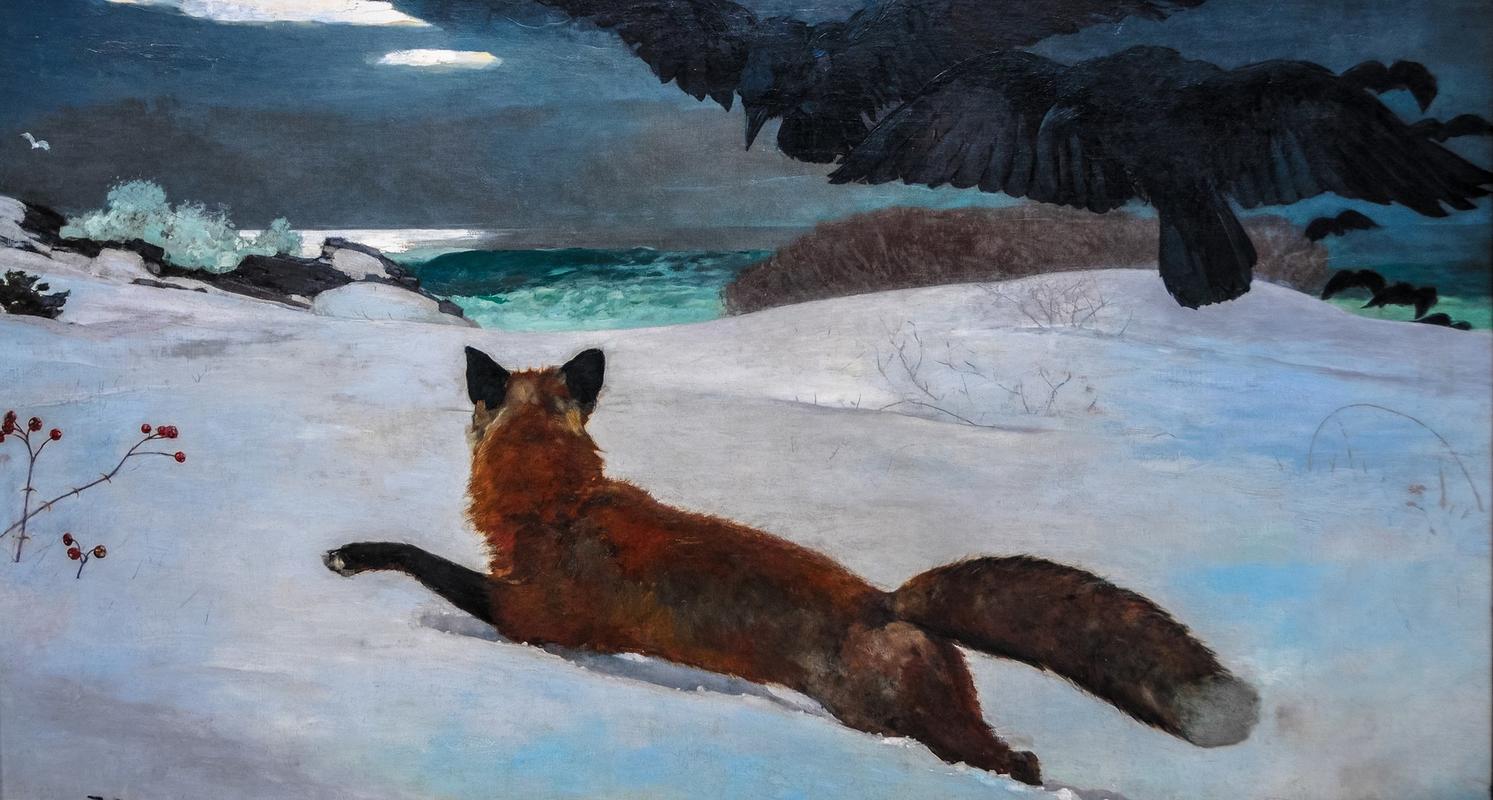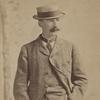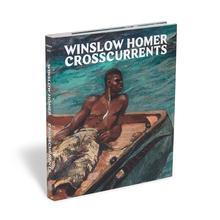More about Fox Hunt
- All
- Info
- Shop

Sr. Contributor
Winslow Homer dabbled in a bit of taxidermy to prepare his models for Fox Hunt, which is now considered one of his masterpieces.
When Homer was struck by inspiration to craft this harsh narrative on the unforgiving nature of winters in Maine, his first step was requesting a hunter friend kill him a fox and a few crows. Whether you regard this as an fitting extension of the harshness reflected in the painting or as blatant animal cruelty, at the time no one questioned the request since it was the late 19th century and PETA wasn't around yet. Homer's friend got him the crows, and another hunter beat him to the fox.
Unfortunately for Homer, his inspiration wasn’t as timely as he’d have liked. Wanting to set up a winter composition in March, he encountered some technical issues. At first, the cold air froze the dead crows he positioned as if in flight on a snowdrift outside his studio window. There wasn’t much issue with the fox, who’d been posed with sticks and strings to get the running stance right, but as the weather warmed, the crows kept thawing and going limp.
Working through his frustration, he rendered the crows in this piece as well as he could. After, he took the painting to a Scarboro stationmaster who he trusted to be incredibly blunt in giving his opinions about art. He told him point blank: “Hell, Win, them ain’t crows.” Homer didn’t argue, and he painted them out of the piece.
He returned to Scarboro station with his stationmaster friend and for three days they used corn to lure in live crows for Homer to sketch instead. Several sketches later, he perfected his desired crow poses for the painting. Using live animals in their own environment instead of killing them paid off. We can’t confirm if Homer kept this lesson in mind for his future works, as after this his paintings largely focused on the ocean.
As for one of his final paintings, Right and Left, which either depicts two ducks dying to shotgun blasts or narrowly escaping death - Homer was purposely ambiguous about the meaning - there are contradicting accounts of his auditioning process for duck models. One biographer claims two ducks Homer purchased for his Thanksgiving dinner were so handsome he decided to paint them. Then he went out on a boat to observe a hunter shooting ducks for inspiration. Another said he stood on a cliffside and had blanks fired at the ducks. So, we're unsure if the animal murdering continued to be a part of his process.
Sources
- Buckley, Christopher. Washington Schlepped Here: Walking in the Nation's Capital. New York: Crown Journeys, 2003.
- Downes, Williams Howe. The Life and Works of Winslow Homer, 1974.
- “Right and Left.” National Gallery of Art. Accessed February 17, 2022. https://www.nga.gov/collection/art-object-page.39763.html.
- Weinberg, H. Barbara. “Winslow Homer (1836–1910).” Metmuseum.org. The Met. Accessed February 17, 2022. https://www.metmuseum.org/toah/hd/homr/hd_homr.htm.
- “Winslow Homer, ‘Fox Hunt’ (1893): Pafa - Pennsylvania Academy of the Fine Arts.” PAFA. Pennsylvania Academy of the Fine Arts, December 28, 2014. https://www.pafa.org /museum/collection/item/fox-hunt.
Featured Content
Here is what Wikipedia says about The Fox Hunt (painting)

The Fox Hunt is an 1893 oil on canvas painting by the American artist Winslow Homer. It depicts a fox running in deep snow, menaced by hungry crows. His largest single work, it has been described as "Homer's greatest Darwinian painting, arguably his greatest painting of any kind."
The Fox Hunt was painted in Homer's studio at Prouts Neck, Maine during the winter of 1893. The painting depicts a fox foraging for food, who is in turn being hunted by crows driven to predation by hunger. At left several sprigs of red berries breach the snow, and in the distance may be seen the coastline and ocean beneath a deep blue sky.
Check out the full Wikipedia article about The Fox Hunt (painting)














I remember studying this piece in college. My professor somehow made this seemingly mediocre painting seem really interesting.